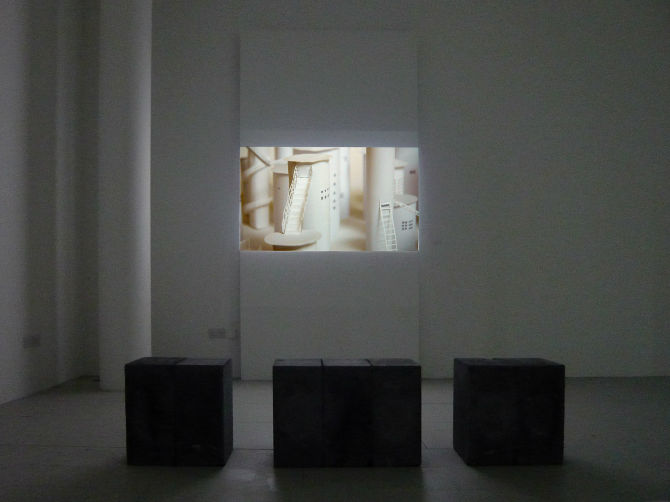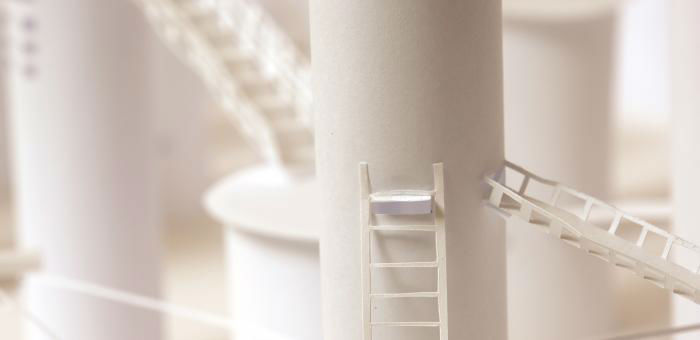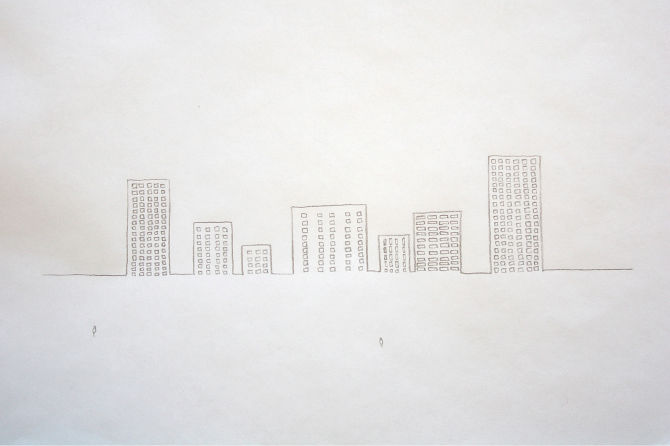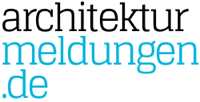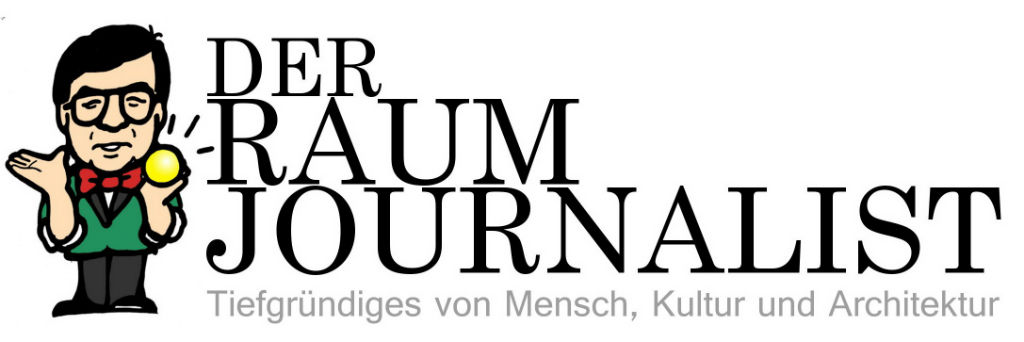ŌĆ£The medium of drawing fascinates me in its direct and unmediated character. It is so versatile and everyone is constantly surrounded by it.ŌĆØ INTERVIEW with Nicole Buning
It is our perception of urban space, of urbanity and our inability to actually understand it, that Nicole Buning put in the center of her work. Starting out with capturing urban structures in fragile drawings, she is currently exploring the means of animations.┬Ā‘Meanwhile, elsewhere’, her latest art work, is an animation commenting on the everyday life in the city, captured between the monotony of modernist architecture and repetitive routines. It explores┬Āthe way we pass through and move around space.
The artifical tectonics of a city have been translated into delicate miniature paper forms that make up various alienating settings, asking how we perceive our surrounding from the confinements of our own body: the tension between our own limitation and this curiosity is investigated through the travels from urban cityscapes to pasture landscapes.
After having finished her education in Northern Germany, Nicole Buning came to London as a gap year assistant – and┬Āfell in love with the city. She started her studies of design and art. In summer 2013, she graduated from Goldsmiths, University of London. At her degree show, Buning, together with two fellod students, was award the EXPOSURE 13 Award┬Āfrom Parasol unit foundation for contemporary art, which is an annual prize for three graduating artists from a UK art school, offering each of them a prize money and the opportunity to exhibit in Parasol unit. Currently, ‘Meanwhile Elsewhere’ is on show at Parasol unit London.
In the deconarch.com interview, Nicole Buning tells us about her fascination with drawings – and subsequently animated drawings – , what interests her in urbanity and how she loves to immerse herself in her work.
┬Āall illus. (c) Nicole Buning
INTERVIEW┬Ā
‘Meanwhile, elsewhere’ is your second animation on moving around the city. How did it come about?
Through ŌĆśMeanwhile, elsewhereŌĆÖ I wanted to explore my fascination of living in the city. It is easy to be at the centre of a city, but can you feel part of one? Our view is restricted and we stay in the centre of it, unable to look at it from anywhere else but our own body. You cannot see the city while you are inside it, just as much as you cannot see the light while you are in a lit room. The light is much more visible from the outside.
Meanwhile, elsewhere (c) Nicole Buning, 2013
Through your art you want to explore how we perceive space and urbanity, how we live in a city while being unable to grasp its dynamics as a whole. Why do you focus on urban architecture in particular?
Urban areas are of high interest to me because they form a big contrast to the village I grew up in. A lot of my work is inspired by the city and especially by Canary Wharf, which is such a fascinating place. The whole district is full of people working for the big cooperates and those who serve them, working in shops and restaurants. The former ones are more or less dressed the same, especially the men in their suits, and everyone is on their way to somewhere, so they become one big mass of movement, everyone following invisible lines to get to their destination in an efficient manner. These patterns are not as obvious in the rest of the city, and even less so in rural areas. But I hope to find them elsewhere and make them into another piece of art.
I am very fond of the simplicity of forms that can be found in modernist architecture and the lack of decoration, which is very similar to the way I draw. Modernism is still very recent and therefore its history almost feels graspable, which I find very intriguing.
Saying that, for my latest film ŌĆśMeanwhile, elsewhereŌĆÖ, I have made some paper models that remind of industrial buildings. But then both industrial and modernist architecture are very similar in their functionality as well as their outward appearance, with their horizontal and vertical lines and clarity of forms.
How do you choose your motives, your subjects?
I am interested in our existence in the city and especially those parts of being that are easily overlooked, which is often while on the move. A lot of people lead their life in a series of interiors and in non-spaces: waiting halls, public transport, offices and gyms. This is a fairly recent development, but in some parts of the world so far extended that people hardly walk anymore and have no place to walk, where there are only streets but no pavements. I try to travel around as much as I can, not only abroad but also in my current location, and choose my subjects through observation and analysis.
How is your working process?
I usually set myself a starting point, from which on I spend every minute making. For my last two completed projects, both animations, this meant either drawing the individual frames, twelve of those will then add to one second, or making miniature paper models. Once I get into the right space I happily spend all my time on my work. Most of my projects take a few weeks or months to complete. The time in between projects I use to see exhibitions, places and films, taking inspirations from lots of different sources.
ŌĆØWaiting For SomethinŌĆÖŌĆ£ is your first animation, on the monotonous life in your average city ŌĆ”
Through ŌĆ£Waiting For SomethinŌĆÖŌĆÖŌĆÖ I wanted to explore the everyday, the time in between things. I often find myself being on auto-pilot when on the train or walking somewhere but I try to observe my environment and the people surrounding me actively. Daily life consists of the recurrence of patterns, and some of them have to be done in a certain order; like you get changed out of your pyjamas before you leave the house and you cannot eat breakfast while having a shower. Is it possible not to have these rhythms? Is it possible to live outside the everyday? And what are the patterns formed around, what is in between them?
You started working with drawings, for example the series ŌĆ£Canada SquareŌĆØ or ŌĆ£Vertical cityŌĆØ. Did you work ŌĆ£en faceŌĆØ, thus did actual buildings inspire the drawings, or from memory?
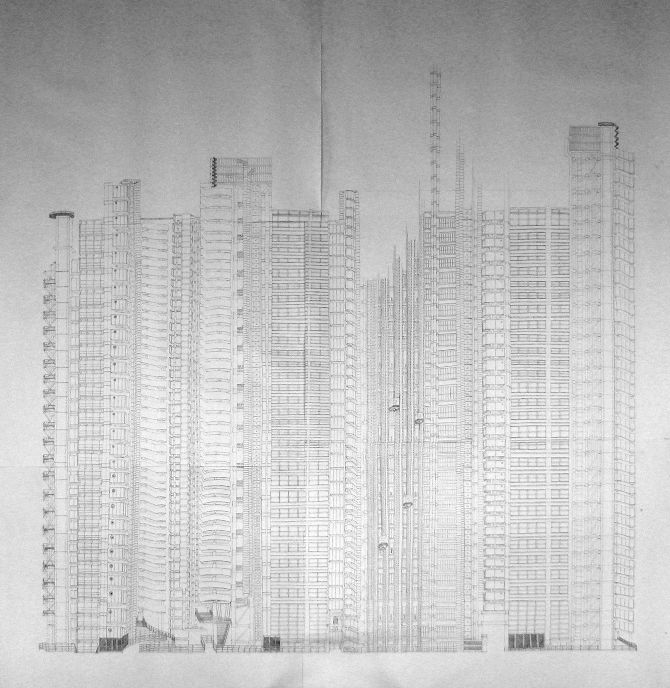
Lloyds of London, Pigment ink on paper, 170 x 160 cm
(A drawing inspired by the Lloyds building in the city of London, also called the Inside-Out Building, designed by the amazing Richard Rogers.┬ĀThe drawing consists of six A1 sheets of paper.)
All of my drawings are done in either pencil or pigment ink. They are often are large in format and always rich in detail. The subject matters are actual sites, where I went to the building and took photographs. Once I got into trouble as they are usually highly guarded by cameras and security, so itŌĆÖs difficult getting decent close-ups. And that is the point where the buildings itself and the pictures are only guideline ad my memory completes the drawing.
All my work is related by a similar content, yet it is not meant as a series, but then it is an ongoing process. I started with the drawings of whole buildings, the ones of building sites and parts of buildings are more recent. So it is a constant development, and I would not mind if it is seen a series.
Why draw these motives, why not photographing them?
My motives are our man-build surrounding that was erected through a lot of dirt and sweat. The detail that you find it these built sites I find irresistible, the complexity of English scaffolding for example. It gets build carefully for a limited amount of time only to build something else and then disappears into nowhere. Through the medium of drawing I am trying to translate this craftsmanship into neat and delicate works on/in paper.
You started with drawings, but recently you are working with animations which we were talking about before. Why the step to animated pictures?
The medium of drawing fascinates me in its direct and unmediated character. It is so versatile and everyone is constantly surrounded by it. Animation feels like an extension, a natural move from the 2-dimensional to the 3-dimensional, especially as I am using more or less the same tools. Apart from glue I am still using paper, pen and a scalpel. Animation is as experimental as drawing, but more dynamic. The medium of drawing lets you invent, but animation allows you to play with the impossible and to bring to live your own world.
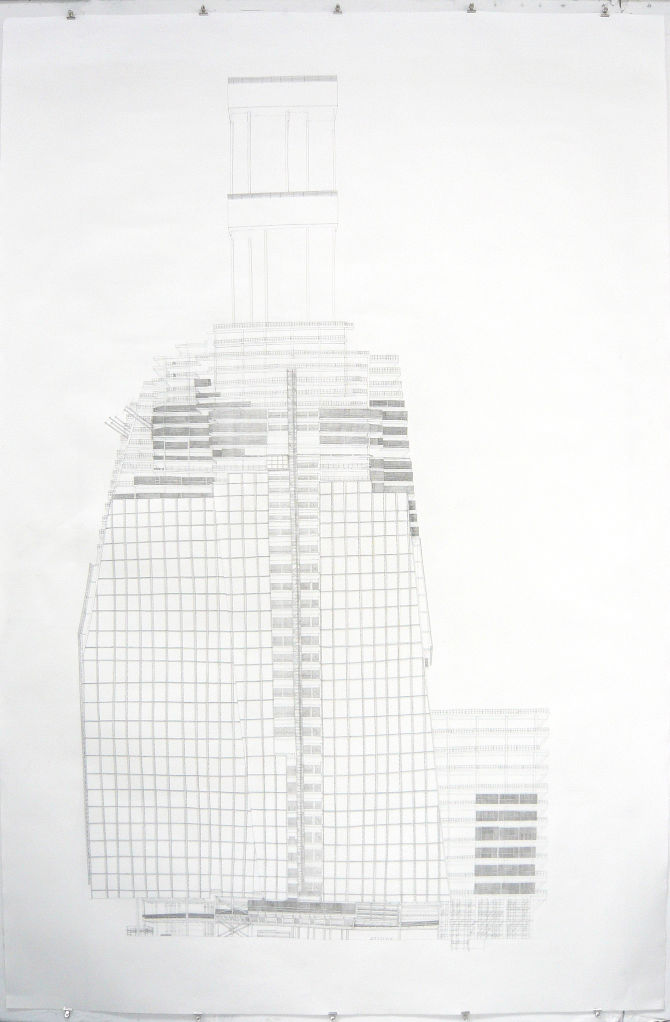
A vertical city, Pigment ink on paper, 236 x 157 cm
(A drawing inspired by The Shard, part of the London Bridge Quarter development, as it looked in November 2010 while under construction.)
When making a drawing you can see the development as you go. In animation there is a massive amount of preparation involved and the result is only visible once the photographs are taken and it is put together as a film, which was really scary. But the biggest challenge is the time that it is consuming. But then one of the fascinating things about animation is this play between the time that it takes to make and the time it takes to watch it. I am a very patient person, so I enormously enjoyed spending the time making it.
Who ŌĆō or what ŌĆō inspires your work?
I hugely adore the work of Paul Noble, his creation of Nobson Newtown is breath-taking. Another artist I look up to is Julie Mehretu. But I take most of my influence from everyday life: from conversations I overheard, things I witnessed, places I came across and discussions with my friends. Most of my friends are in the creative industry but I work in a supermarket, where people are from completely different backgrounds, the costumers and my colleagues. I was told once IŌĆÖm peculiar because I read books and go to museums.
And finally, not easy to answer, but essential: Why art?
As artists we have the possibility to tend to the overlooked, the gaps within society that no one else sees to. Art grants a lot of freedom. It is a platform to communicate your view on things and show your perspective
Are there any shows coming up where we can see your work?
There is a series of events organised by the Capital Pie Collective at the Russet in Hackney, London, where I will be showing some work: It will be a great evening that brings together performers from all different disciplines, I expect it to be a very happy m├®lange of talented acts. You can read more about it on their website
And there is my exhibition at the Parasol Unit in London at the moment, where I will show an altered version of ŌĆśMeanwhile, elsewhereŌĆÖ. As I will be having in a space to myself – in comparison to sharing with another two artists at my degree show – I collaborated with the musician Niklas Stade, who created a wonderful soundtrack to my film. The show will be on until 15th November.
Nicole, “Danke sch├Čn!” for introducing your work to us!

